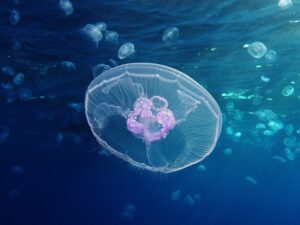The vast world of the ocean, with its countless animal species, makes us long to explore it. From fierce and strange creatures to those with special abilities, they gradually attract human curiosity. We’ve heard of fish that can glow and shrimp with a thousand-pound punch, but there are so many other fascinating things to discover. Today, KnowAllAnimals will introduce you to something even more special: information about the Largest Fish in the Ocean and Their Amazing Features.
1. Top 6 Largest Fish in the Ocean and Their Amazing Features
The immense ocean is home to gigantic fish that are astounding in size. Not only are they impressive for their length and weight, but they also possess unique biological characteristics that help them adapt and survive in the deep sea. Let’s explore the top 6 largest fish in the ocean and their incredible features.
1.1. Blue Whale
- Scientific name: Balaenoptera musculus
- Weight: 140,000 kg (Adult) Encyclopedia of Life
- Lifespan: 80–110 years
- Gestation period: 11 months Encyclopedia of Life
- Trophic level: Carnivore Encyclopedia of Life
- Length: Female: 25 m (Northern Hemisphere populations, Adult), Male: 24 m (Northern Hemisphere populations, Adult)
As we know, the Blue Whale is the largest animal in the world, so it’s ranked number one on this list. They live in the Indian Ocean and the South Pacific and are massive in size, with an average weight of about 90 tons. However, despite their gigantic size, they are not fearsome. The Blue Whale is a plankton-eater. A single adult blue whale can consume up to 40 million krill a day.
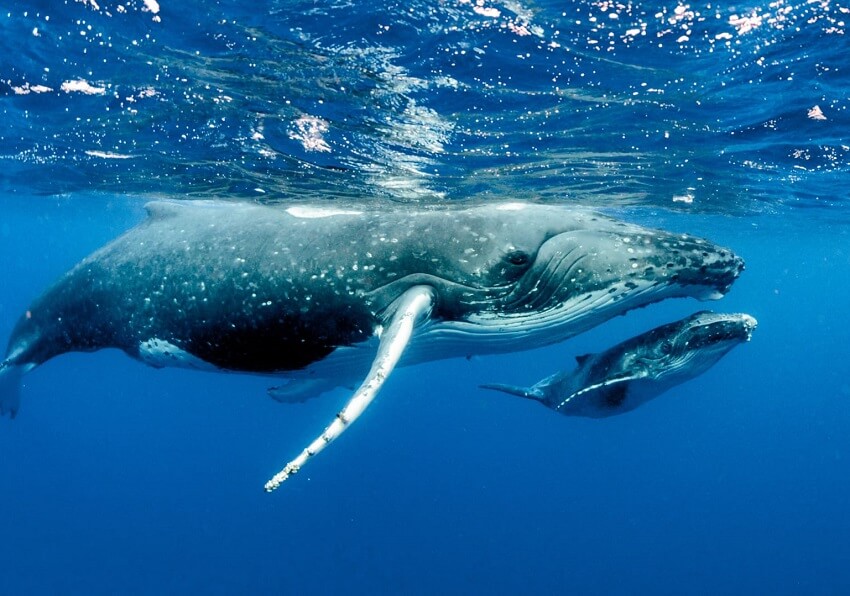
1.2. Sperm Whale
- Scientific name: Physeter macrocephalus
- Weight: 35,000–57,000 kg (Adult)
- Length: 12 m (Adult) Encyclopedia of Life
- Lifespan: 70 years
- Gestation period: 16 months Encyclopedia of Life
- Trophic level: Omnivore Encyclopedia of Life
The Sperm Whale, scientifically named Physeter macrocephalus, belongs to the whale order (mammals), and of course, its size is also outsized. The main habitat of this species is in deep waters over 1,000 meters and not in freezing waters, from tropical to temperate seas. Their diet, unlike that of the blue whale, includes giant squid, octopuses, and even rays.
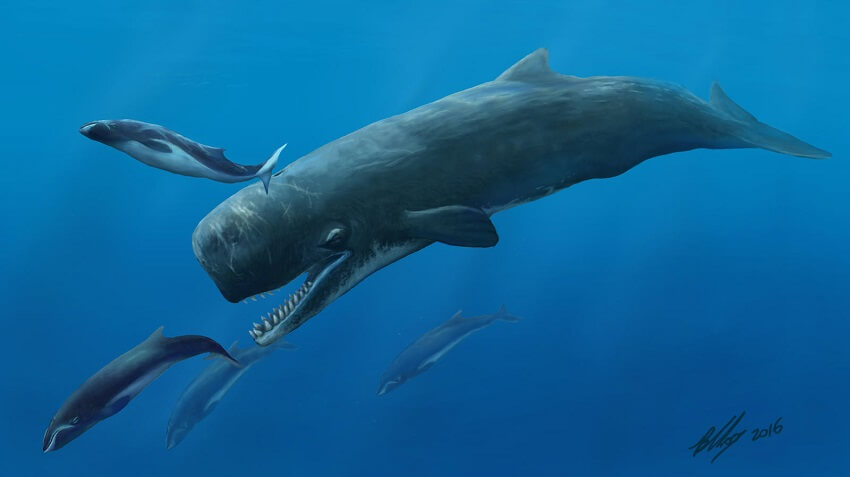
1.3. Basking Shark
- Scientific name: Cetorhinus maximus
- Weight: 2,200 kg (Adult) Encyclopedia of Life
- Conservation status: Vulnerable (Decreasing) Encyclopedia of Life
The Basking Shark, scientifically known as Cetorhinus maximus, is an enormous fish. Yet, like the Blue Whale, they are filter feeders that consume only plankton. They can filter up to 2,000 tons of small fish and invertebrates per hour. They are slow-moving and often found floating near coastlines, which is how they got the name “Basking Shark,” as they appear to be basking in the sun.
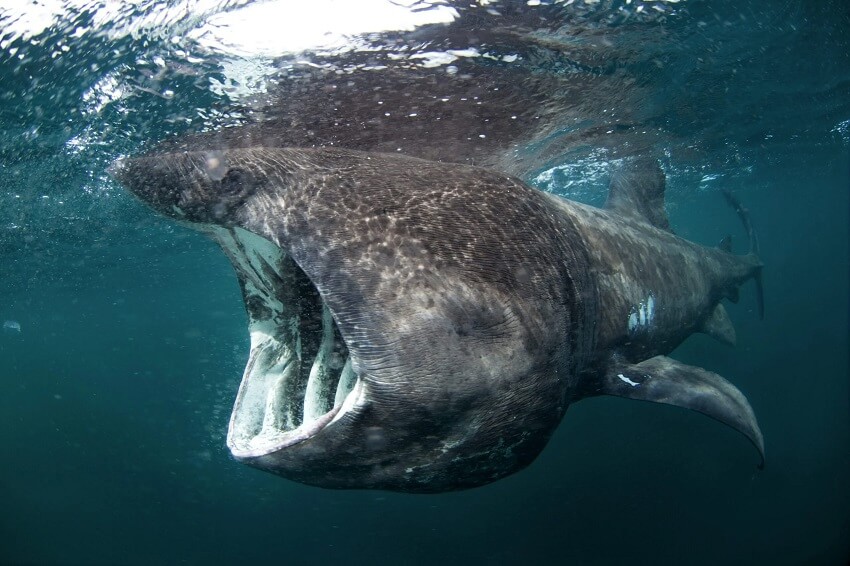
1.4. Oarfish
- Scientific name: Regalecus glesne
- Length: about 17 m on average
- Weight: 270 kg
The Oarfish, also called the “King of Herrings,” is a long, flat fish that lives in the deep parts of the ocean, which is why they are so rarely seen. They are plankton feeders and are not dangerous. Very little is known about this mysterious animal. They are usually only discovered when they are dead or when they surface during storms or before an earthquake. In Japan, people believe that oarfish can predict earthquakes, and when an oarfish appears, an earthquake may be about to happen.
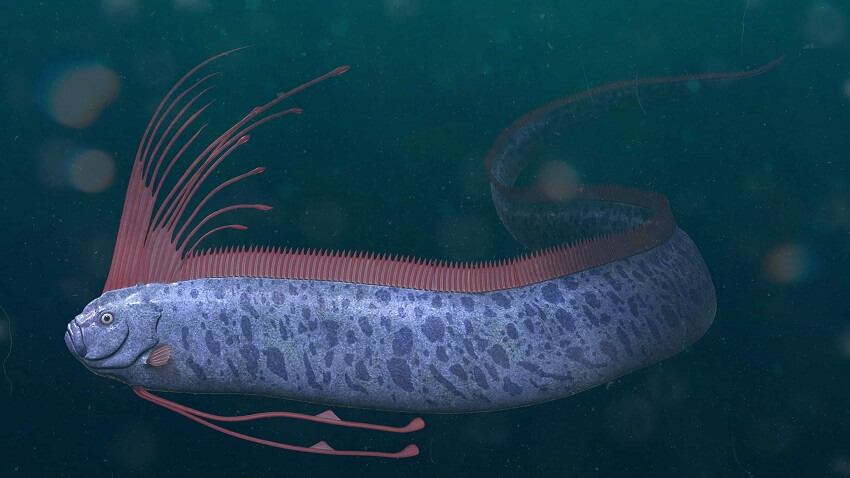
1.5. Ocean Sunfish (Mola Mola)
- Scientific name: Mola mola
- Length: 1.8 m (Adult)
- Weight: 1,000 kg (Adult)
- Speed: 3.2 km/h (Maximum, Adult)
The Ocean Sunfish, scientifically named Mola mola, is a large, colorful species that lives in deep waters, similar to the oarfish. They are named “sunfish” because they are often found floating on the ocean’s surface. They primarily live in tropical waters but can sometimes be found in temperate and even cold regions during the warmer seasons. The main diet of these huge fish is plankton and seaweed.
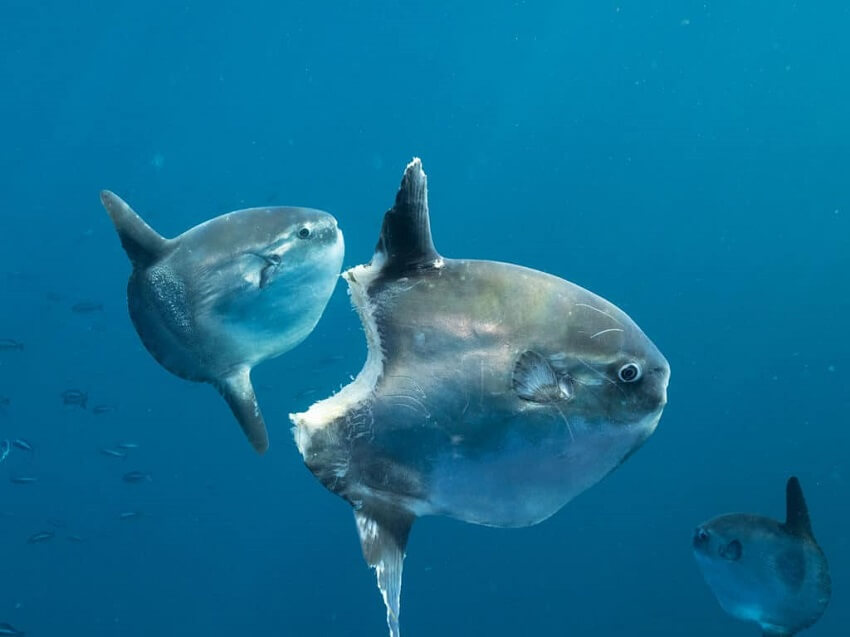
1.6. Whale Shark
- Scientific name: Rhincodon typus
- Weight: 19,000 kg (Adult) Encyclopedia of Life
- Length: about 9–11 m
The Whale Shark, scientifically named Rhincodon typus, belongs to the shark family (cartilaginous fish) but is the largest among them. They mainly live in tropical or warm temperate waters and migrate to coastal areas like the Ningaloo Reef during breeding season. Despite their enormous size, they are completely harmless, as their main diet consists of plankton, squid, and small vertebrates. They are a classic example of the saying, “sharks are not dangerous to humans.”

2. FAQs
1. How large is the blue whale, the biggest fish in the world?
The Blue Whale (Balaenoptera musculus) can weigh between 90-140 tons and reach a length of up to 25 m (females) and 24 m (males) in the Northern Hemisphere.
2. What do sperm whales eat and what is their habitat?
The Sperm Whale (Physeter macrocephalus) is an omnivore that primarily hunts giant squid, octopus, and rays. They live in deep waters over 1,000 meters, from tropical to temperate seas.
3. Is the Basking Shark dangerous?
Despite its enormous size (around 2,200 kg), the Basking Shark is a filter-feeder that eats only plankton. It does not hunt large prey and is not dangerous to humans.
4. What are some unique features of the oarfish?
The oarfish is a very long (about 17 m), flattened fish that lives in the deep ocean. Little is known about them, and they are typically only discovered when they surface or are affected by environmental pressures like storms.
5. Are the ocean sunfish and whale shark similar in terms of being a threat?
Yes—both are large, but both the ocean sunfish and whale shark feed on plankton or small organisms. They do not hunt large prey and pose no direct threat to humans.
3. Conclusion
Through these giant fish like the blue whale, sperm whale, basking shark, oarfish, and ocean sunfish, we realize that immense size does not equate to ferocity. Many of these species survive by eating plankton, living deep in the ocean, or surfacing at specific times. Understanding the characteristics of the Largest Fish in the Ocean not only enriches our knowledge of nature but also helps us better appreciate the gentle yet magnificent beauty of the ocean.


